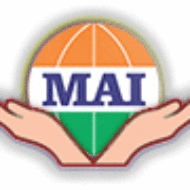by Dr. Vaijayanti Lagu – Joshi
These are frequently found chronic illnesses that have many features in common.
- All are chronic, lifelong illnesses with multifactorial aetiopathogenesis – with genetic background as well as environmental factors involved in pathogenesis.
- The diseases are multisystemic – having impact on many systems of body, skin, eye, kidneys, lungs, nerves, heart etc.
- They are all aggresive & are progressive in nature. If uncontrolled & aggressive, can lead to life threatening complications, increase in morbidity as well as mortality.
- They are not curable but definitely controlled with proper medications & lifestyle modification.
- Thus, they are to be detected / diagnosed as early as possible & treated as aggressively as one can. They have to be regularly followed up under expert guidance.
- There are certain circumstances where these diseases can co-exist & drugs do have some interactions, e.g. prolonged treatment with high dose of steroids for arthritis may lead to development of diabetes / hypertension.
- Diabetes itself can give rise to arthropathy and decrease joint mobility. Now let us consider a few things regarding these illness their management & prevention.
Diabetes –
It results from either insulin deficiency and / or insulin resistance. Accordingly, there are 2 main subgroups of diabetes:-
Type I – Insulin dependent
Type II – Non – Insulin dependent
The clinical features as well as management differ in
these groups.
How to diagnose diabetes?
Some of the clinical features –
- Recent weight gain / loss
- Polyphagia
- Polydypsia
- Polyuria
- Recurrent infections, like urinary tract infections
Laboratory Criteria.
Multisystem complications of diabetes are –
- Nephoropathy (Kidneys)
- Vasculopathy (Blood Vessels)
- Neuropathy (Nervous System)
- Retinopathy ( Retina of Eye)
- Cardiomyopathy (Heart Muscle)
Control of diabetes
It involves non – pharmacological as well as pharmacological measures. Non pharmacological measures play important role.
Diet :-
- Calorie intake & actual requirement of calories is to be calculated for every patient.
- No fasting / feasting.
- Frequent, small meals are better.
- Cut down sweets, refined sugar, excess tea / coffee, saturated fats / oils.
Exercise: –
- Regular daily exercise – at least 30 min walk.
- Type & timing of exercise according to patient’s convenience.
- No exercise in fasting state or after a full meal.
- No vigorous exercise without expert opinion.
Stress Management
Yoga, meditation and other relaxation techniques better for stress management .
Drugs –
i) For glycemic control.
1)Oral hypoglycemic agents – Increase insulin secretion and improve sensitivity of insulin receptors.
2)Insulin – Dose, time, type and strength should be confirmed by experts.
- To be taken strictly under supervision.
- No missing of meals / drugs.
- No long acting hypoglycemic agents in elderly patients.
- Learn proper technique of injections & dose.
Doses of drugs not to be changed without expert’s opinion.
ii) For associated problems like hypertension and dysplipidemia –
Antihypertensives and lipid lowering agents.
Monitoring of diabetes
1)Regular blood glucose profile– Fasting and Postoprandial measurements are to be done 2 monthly in well controlled diabetes, or as & when required.
2)Other periodic investigation are needed to rule out complications
- Urine examination for proteinuria also should be done, in addition.
- Renal Functional tests.
- Lipid Profile.
- Eye chekup.
- Neurological examination.
- Special care is to be given to feet, nails, eyes.
Hypertension –
It is a condition in which there is elevation of blood pressure in peripheral arteries. Readings are mentioned
as systolic pressure that indicates contractility of heart and diastolic pressure indicates tone / resistance of peripheral
vessels. The blood pressure of an individual varies with time . Factors like age, posture, sympathetic nervous
system activity, etc. affect the blood pressure from time to time.
Average blood pressure for adults ( 18 years or older) 120/80 mm Hg is taken as normal blood pressure, 2 or more diastolic BP reading > 90mm Hg on at least 2 subsequent visits is taken as diastolic hypertension.
At one end hypertension can remain asymptomatic, however, it can give rise to fatal sequelae like acute left
ventricular failure or renal shut down. Hence it needs to be detected early & treated aggressively.
Risk factors for hypertension –
- Male sex
- Family history
- Smoking
- Hyperlipidemia
- Diabetes
Target organ damage can manifest as
- Left ventricular hypertrophy
- Angina, Myocardial infarction
- Stroke, ( hemiparesis / hemiplegia)
- Peripheral vascular disease
- Renal impairment
Treatment of hypertension aims at
diastolic BP< 90mm Hg.
systolic BP < 160 mm Hg .
Nonpharmacological Measures:-
To be continued lifetime along with definitive treatment.
- Reduce / control of weight if obese.
- Reduce dietary fat/saturated oils
- Reduce salt intake
- Stop smoking
- Limit / stop alcohol intake
- Regular exercises
- Stress relaxation – yoga
Drugs –
Many anti hypertensives are available for the treatment in the market, but choice of drug depends on many factors
like age, renal status associated conditions like diabetes etc. Hence, proper selection of proper drug is most
important.
- Drugs to be taken regularly, at fixed timings, if possible
- No missing of drugs.
- No changes of drug doses / drug, unless consulted with the experts.
